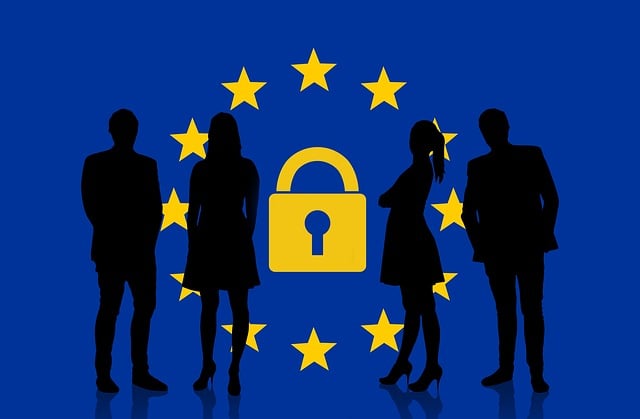In the digital age, mail wire fraud poses a significant challenge, requiring a multi-pronged approach for prevention and justice. The "burden of proof" standard, particularly "beyond a reasonable doubt," heavily influences verdicts in these cases, demanding compelling evidence from prosecutors. Effective legal strategies, including challenging witness testimonies and meticulous record-keeping, can impact outcomes. By combining technology, employee training, and robust legal frameworks, including awareness campaigns to educate the public, we can combat fraud, safeguard rights, and ensure fair judicial processes, ultimately affecting verdicts positively.
Mail wire fraud, a sophisticated crime, exploits the digital age’s convenience. This article offers a comprehensive overview of mail wire fraud, delving into its intricacies from a legal perspective. We explore how the burden of proof significantly influences conviction rates and examine effective strategies to combat this growing threat. Understanding these dynamics is crucial for both legal professionals and individuals seeking to protect themselves in today’s digital landscape.
- Understanding Mail Wire Frauds: A Comprehensive Overview
- The Role of Proof in Criminal Cases: A Legal Perspective
- Impact of Proof Standards on Conviction Rates
- Strategies to Combat and Prevent Mail Wire Fraud
Understanding Mail Wire Frauds: A Comprehensive Overview

Mail wire frauds have become increasingly sophisticated and prevalent in today’s digital age, posing significant challenges to both individuals and businesses. These fraudulent schemes typically involve the unauthorized transfer of funds through deceptive means, such as phishing emails, fake wire transfer requests, or manipulated bank records. Understanding the mechanisms behind these crimes is crucial for prevention and effective law enforcement.
The burden of proof plays a pivotal role in determining verdicts in mail wire fraud cases. Prosecutors must present compelling evidence to establish beyond a reasonable doubt that a defendant intended to defraud. This includes detailed financial records, communication logs, and expert testimony. The complexity lies in the fact that these crimes often leave minimal tangible traces, making it a challenge for both law enforcement and white-collar defense attorneys. Engaging the philanthropic and political communities in awareness campaigns can also aid in mitigating such frauds by educating potential victims.
The Role of Proof in Criminal Cases: A Legal Perspective

In criminal cases, the role of proof is paramount, with the burden of proof resting on the prosecution to establish guilt beyond a reasonable doubt. This fundamental principle is a cornerstone of fair trials and protects individuals from wrongful convictions. The concept of “beyond a reasonable doubt” means that the jury must be convinced to a moral certainty that the defendant committed the crime. This high standard ensures that verdicts are based on substantial evidence, not mere speculation or intuition. In high-stakes cases, where the consequences for both the defendant and victims can be severe, this burden becomes even more critical.
For his clients, effective legal representation involves navigating this intricate web of proof and presenting a robust defense strategy. Lawyers play a pivotal role in guiding jurors through complex evidence, challenging prosecution witnesses, and raising reasonable doubts that could potentially alter the outcome of jury trials. Understanding how the burden of proof affects verdicts is not just about legal jargon; it’s about ensuring justice is served fairly and accurately, protecting the rights of both the accused and the accuser.
Impact of Proof Standards on Conviction Rates

The burden of proof is a fundamental aspect that significantly influences conviction rates in mail wire fraud cases. In criminal proceedings, the prosecution must present compelling evidence to establish guilt beyond a reasonable doubt. This standard varies across jurisdictions but generally requires a high level of certainty to secure a conviction. The impact of this proof standard becomes evident throughout all stages of the investigative and enforcement process, from gathering evidence to presenting it in court.
In cases involving white-collar and economic crimes, such as mail wire fraud, meeting the burden of proof can be complex. Defendants often employ strategic defenses, challenging the admissibility of evidence or raising reasonable doubts about the prosecution’s case. As a result, law enforcement agencies and prosecutors must meticulously document and corroborate each piece of evidence to ensure its integrity and reliability. This stringent approach aims to protect the rights of the accused while ensuring justice is served in cases that often involve intricate financial schemes and deceptive practices within respective businesses.
Strategies to Combat and Prevent Mail Wire Fraud

Combating and preventing mail wire fraud requires a multi-pronged approach leveraging technology, stringent protocols, and robust legal frameworks. One critical strategy is to strengthen security measures in financial transactions by employing advanced encryption techniques and secure communication channels. Additionally, continuous employee training on fraud awareness and due diligence is essential. Businesses should implement rigorous Know Your Customer (KYC) processes to verify the identities of all corporate and individual clients, scrutinizing every transaction meticulously throughout all stages of the investigative and enforcement process.
The burden of proof plays a significant role in shaping verdicts in mail wire fraud cases. Effective legal strategies that challenge the prosecution’s evidence can significantly impact outcomes. By presenting compelling defenses, including the questioning of circumstantial evidence and the integrity of data collection methods, defendants can achieve extraordinary results. This emphasizes the importance of meticulous record-keeping and transparent reporting to mitigate risks and ensure fair judicial processes.
Mail wire fraud, a sophisticated and evolving crime, demands heightened vigilance. By understanding the mechanisms behind these scams, recognizing the legal implications, and adopting robust prevention strategies, we can significantly reduce their impact. The burden of proof plays a pivotal role in ensuring just verdicts, as it dictates the strength of evidence required for conviction. Through stricter proof standards and collaborative efforts between law enforcement and the public, we can foster an environment that discourages and deters mail wire fraud, ultimately protecting individuals and maintaining the integrity of our financial systems.






